Abstract
1. It has been demonstrated recently that, when suitably instructed, subjects could alter the stiffness at the elbow in response to a slowly and imperceptibly changing elastic load. Although evidence was provided in favour of this occurring via changes in gain of the reflex response to stretch, changes in the degree of co-contraction could not be entirely ruled out. The major objective of the present experiments was to determine if subjects could alter stiffness at the wrist in a similar task, and then to determine whether they retained this ability when co-contraction was made impossible by anaesthetizing the nerve to the wrist extensors. A second objective was to determine if changes in stiffness could be controlled independently at the wrist and elbow. 2. Subjects, with eyes closed, initially held position constant against a constant force that loaded the flexors. For the wrist, they were instructed: (i) to keep the hand as still as possible (keep position constant) or (ii) to let the hand be moved by the perturbation (keep force constant). The perturbation was an initially imperceptible elastic load whose direction (loading or unloading) could not be predicted. Subjects were also asked to indicate when the perturbation was first perceived. 3. When asked to hold position constant or force constant at the wrist, subjects demonstrated task-dependent changes in stiffness prior to perception of the perturbation. These changes in stiffness were still achieved when the nerve to the wrist extensors was anesthetized and thus co-contraction was prevented. 4. Five subjects demonstrated the ability to control stiffness independently at the wrist and the elbow although most subjects had difficulty with the task we employed to demonstrate this. 5. The results demonstrate: (i) that for the wrist, set-dependent changes in stiffness that occur prior to perception of a slowly developing perturbation can be mediated by changes in gain of reflex responses to those perturbations, and (ii) that stiffness can be controlled independently at the wrist and elbow, presumably in part by changes in gain of stretch reflexes.
Full text
PDF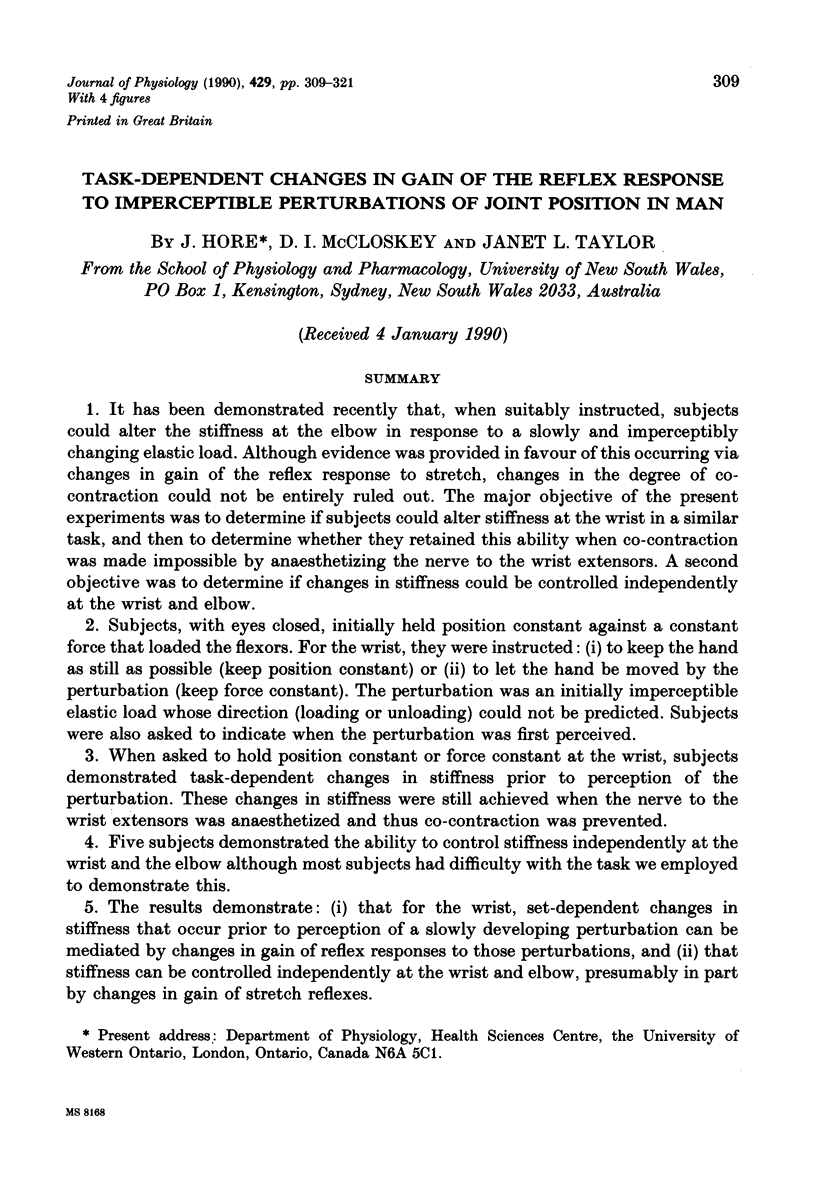

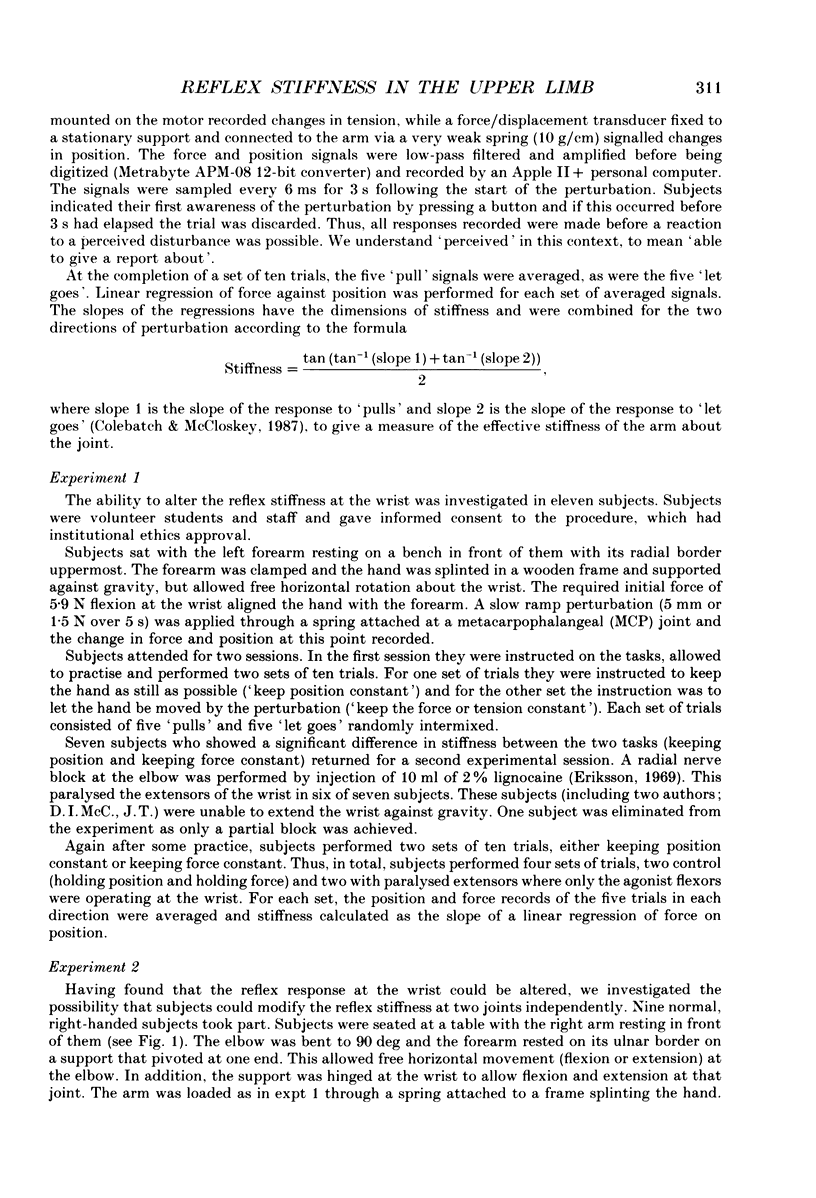
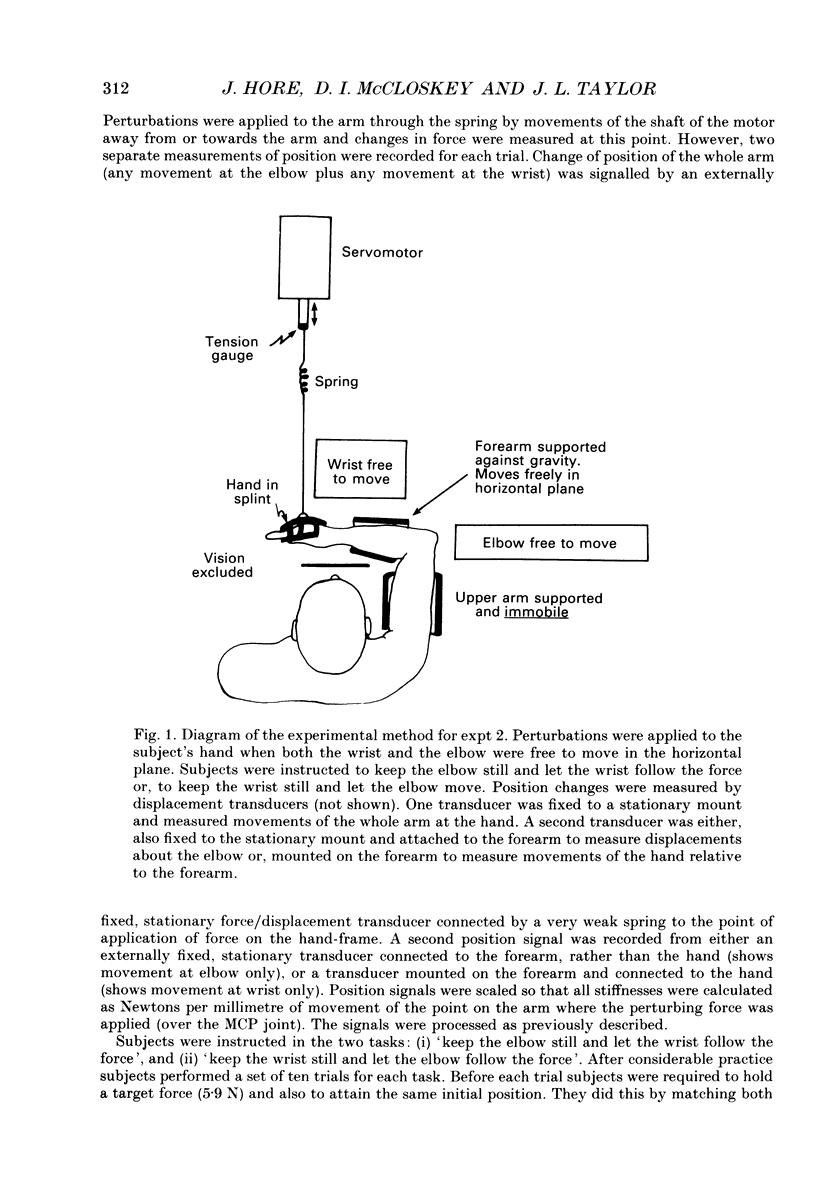
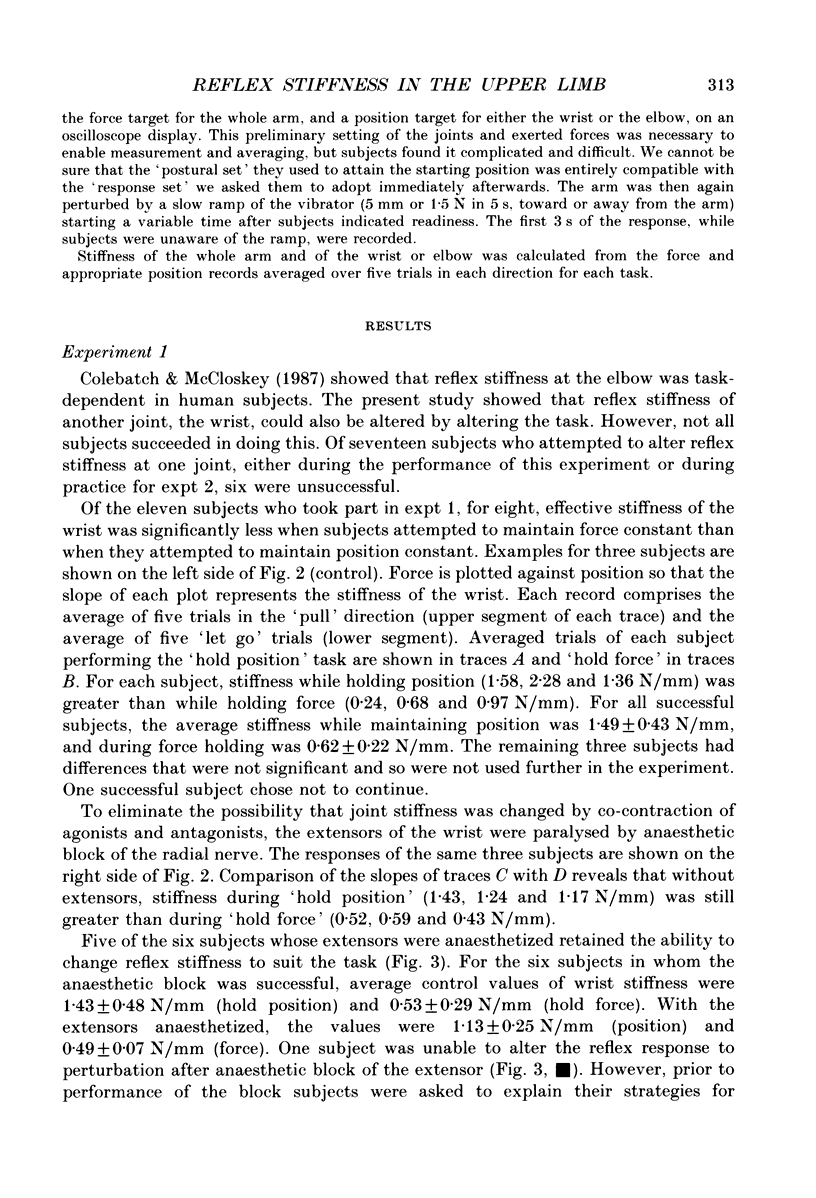
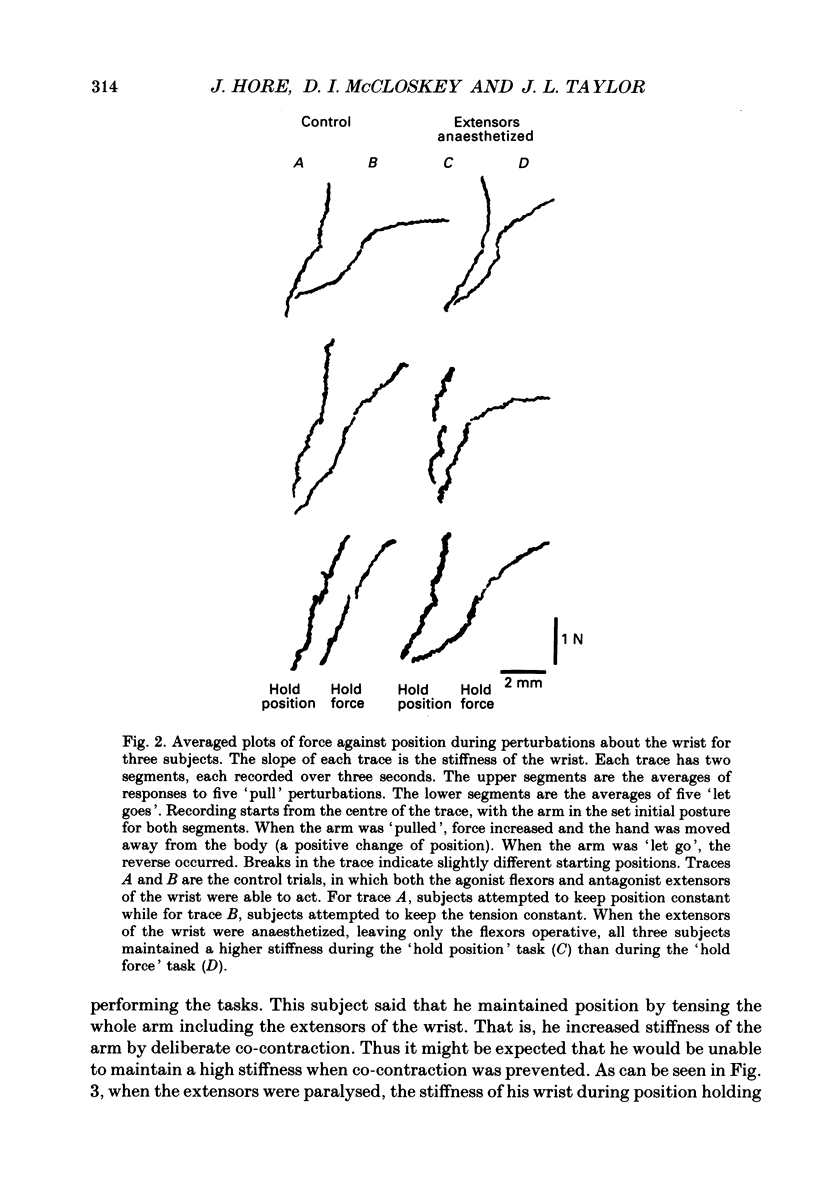
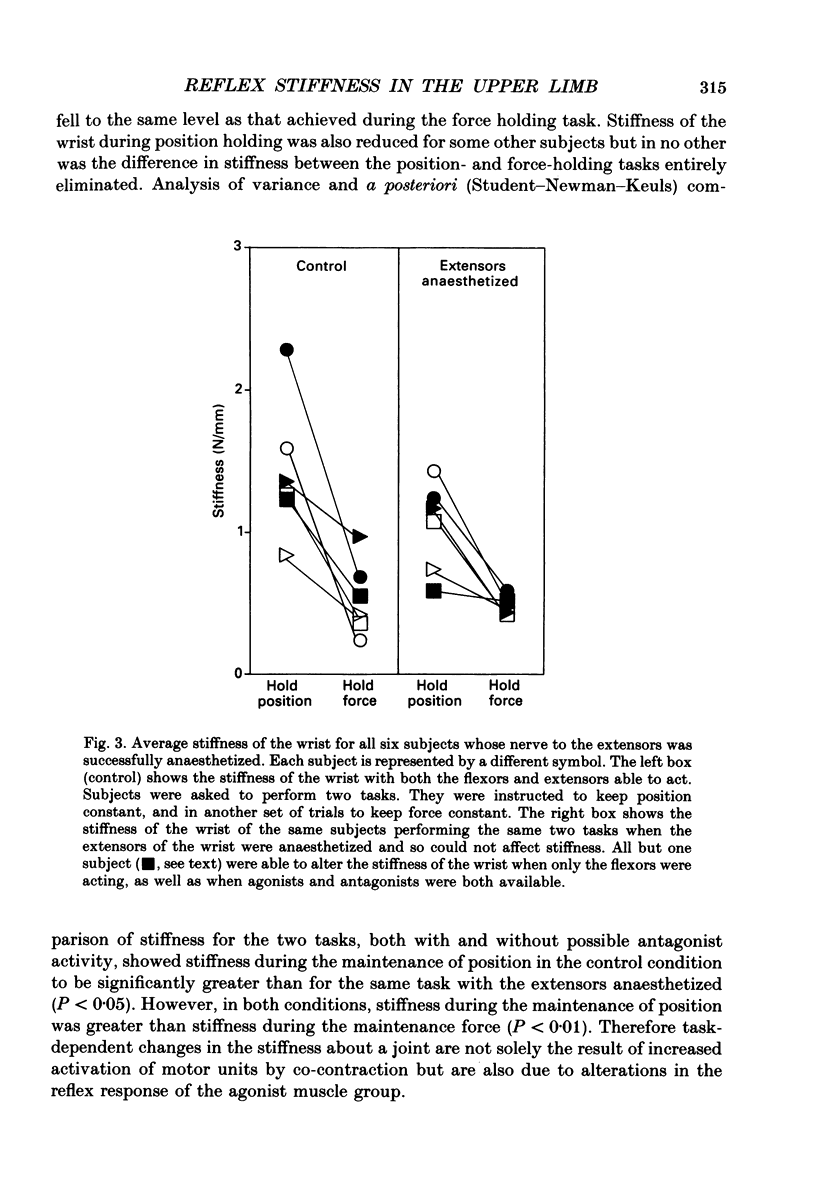
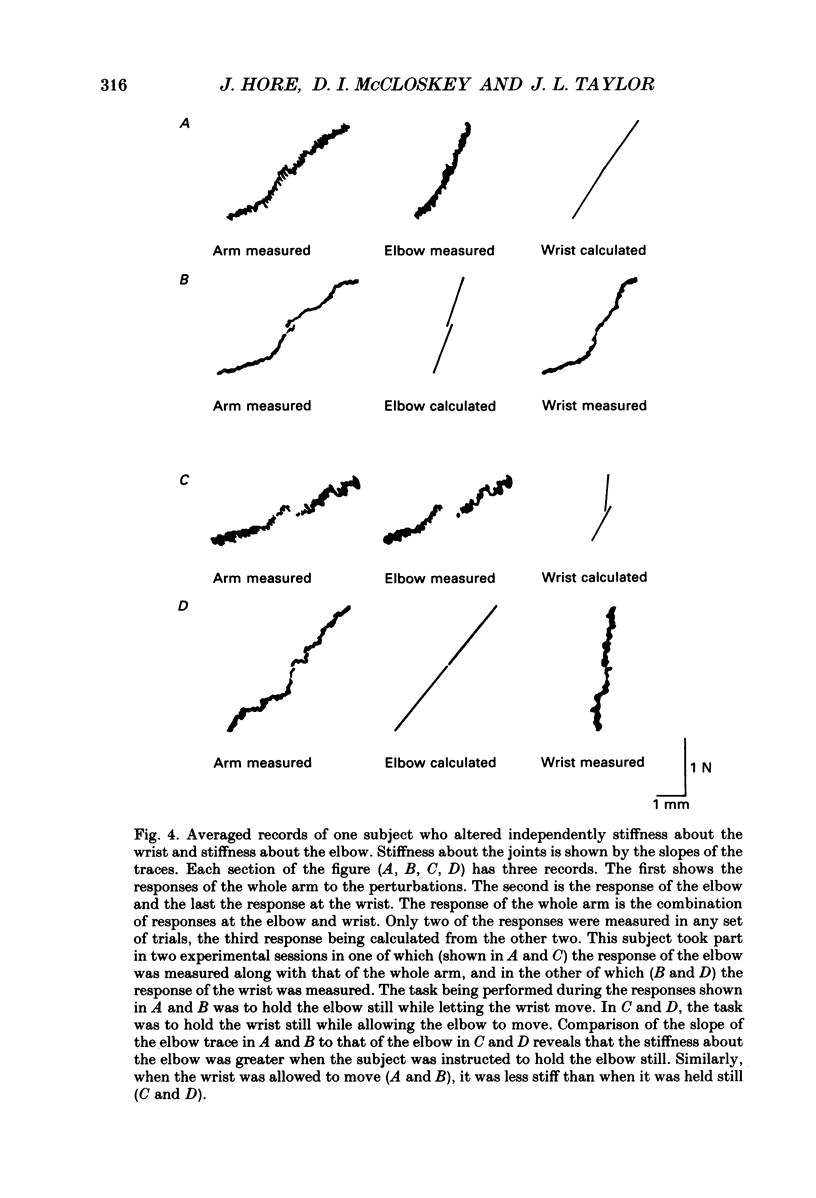
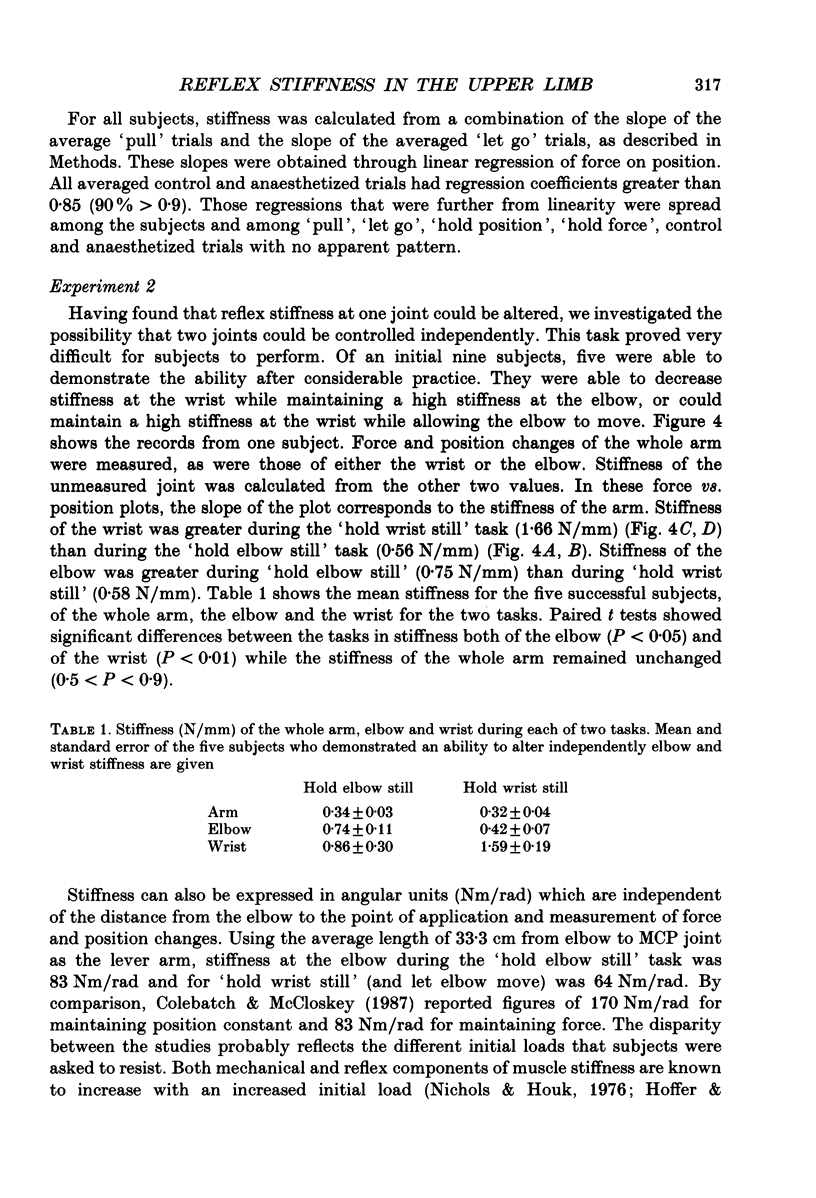
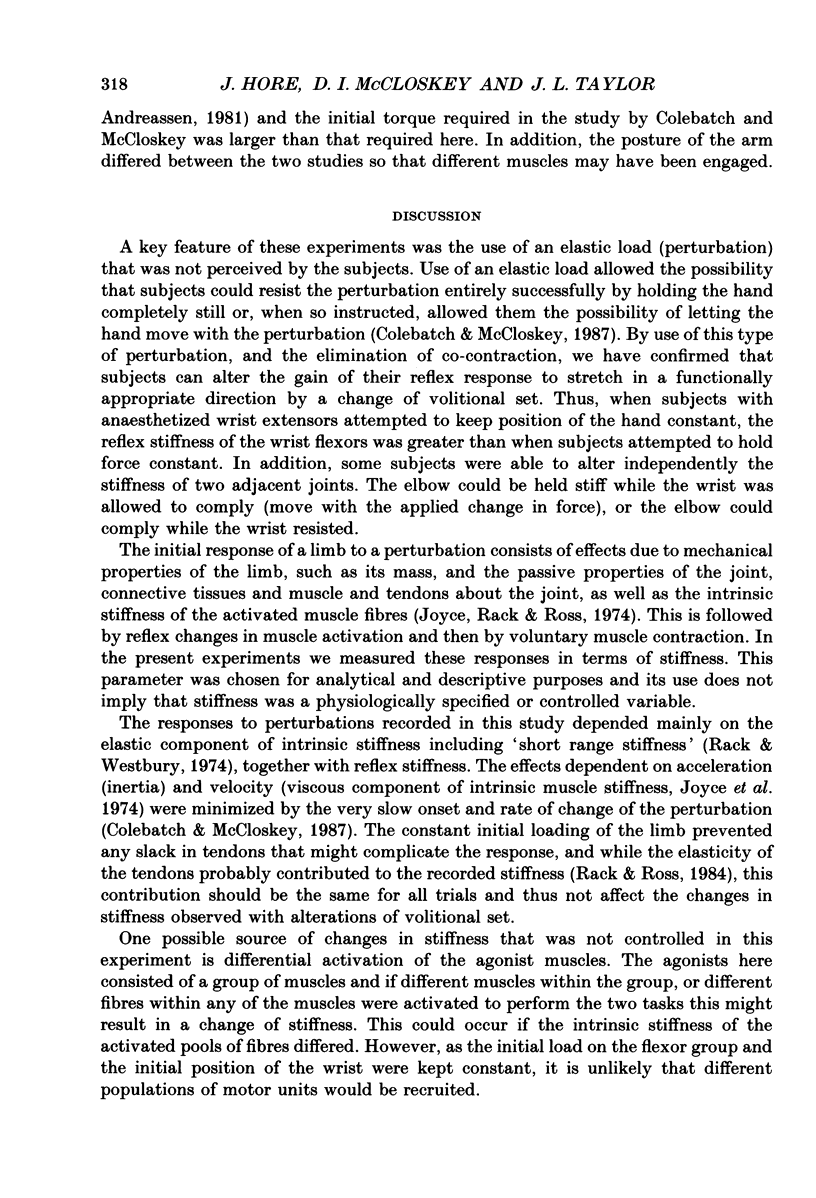
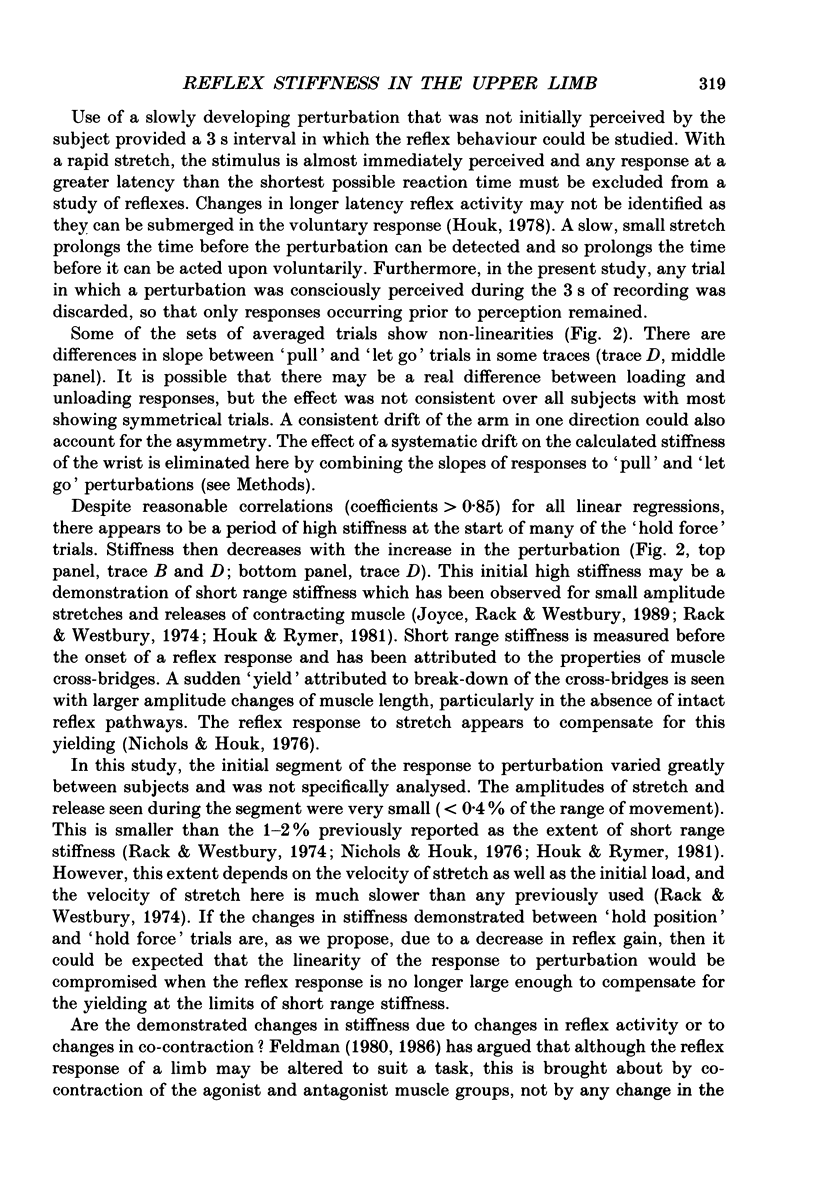
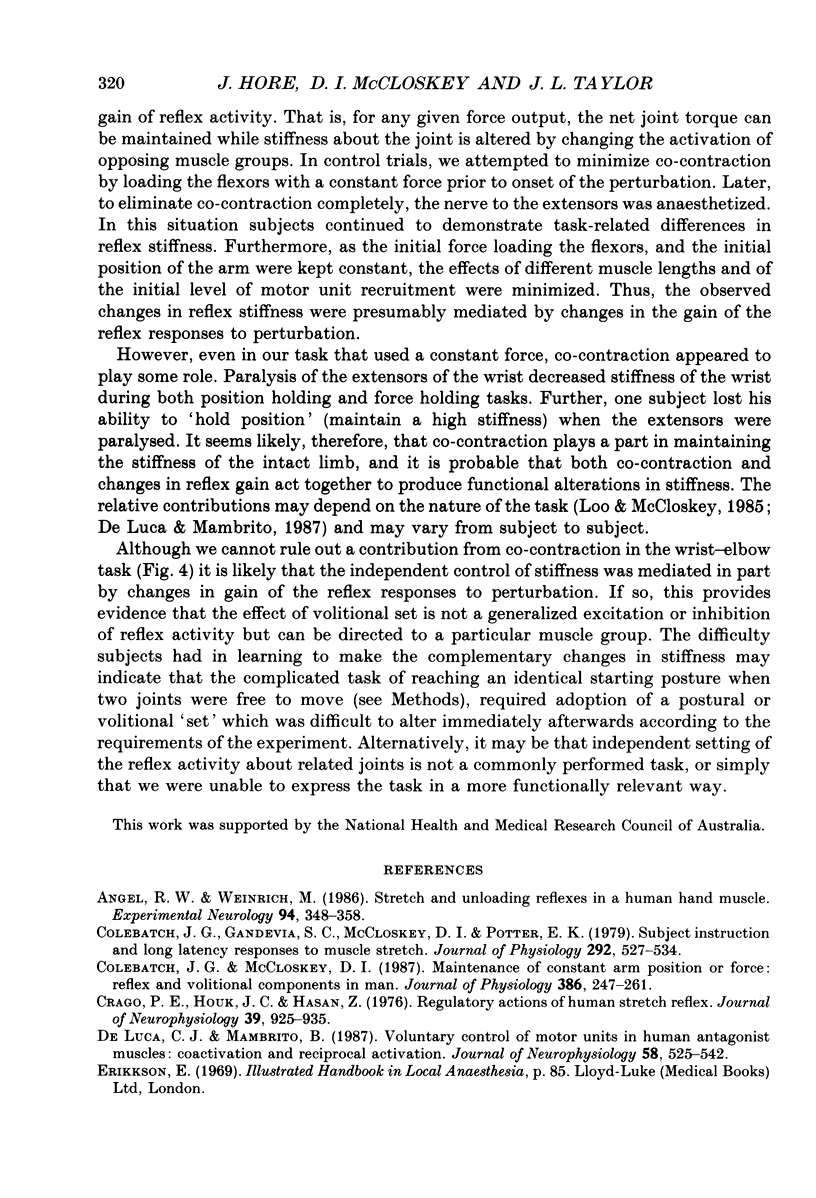
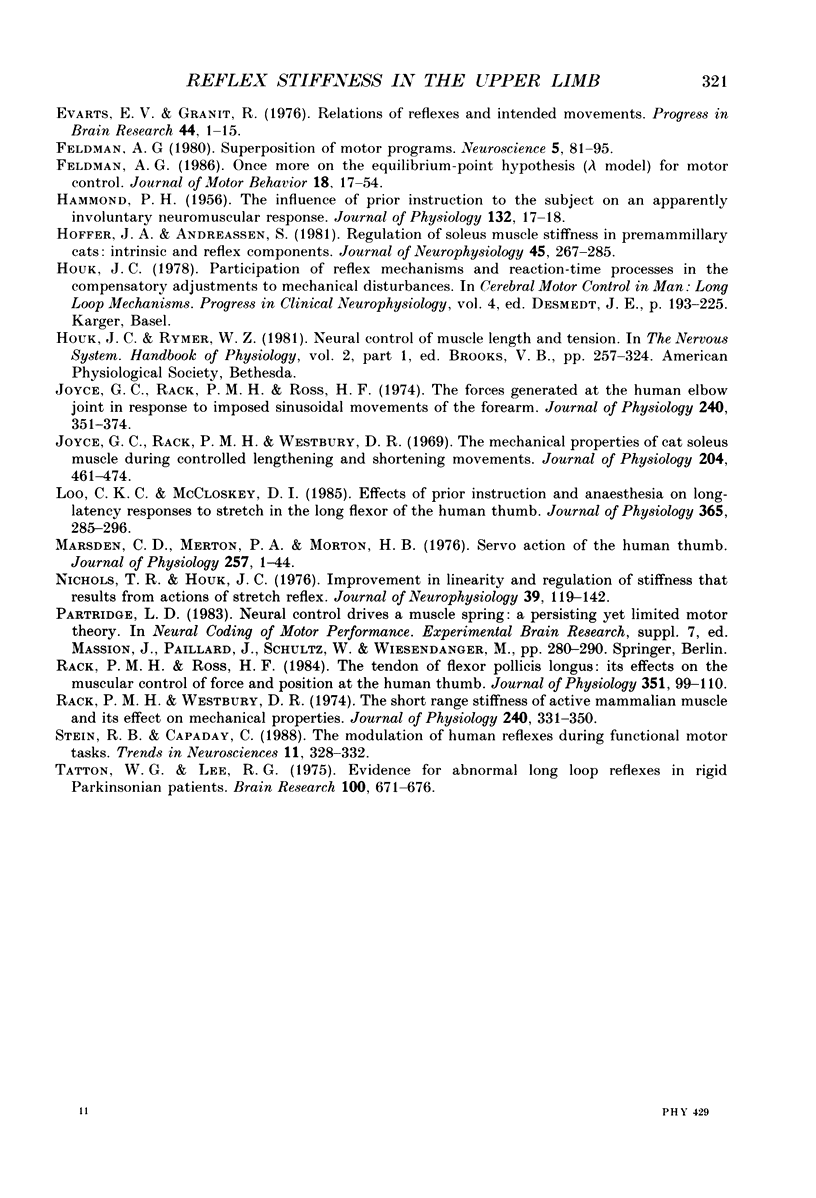
Selected References
These references are in PubMed. This may not be the complete list of references from this article.
- Angel R. W., Weinrich M. Stretch and unloading reflexes in a human hand muscle. Exp Neurol. 1986 Nov;94(2):348–358. doi: 10.1016/0014-4886(86)90108-1. [DOI] [PubMed] [Google Scholar]
- Colebatch J. G., Gandevia S. C., McCloskey D. I., Potter E. K. Subject instruction and long latency reflex responses to muscle stretch. J Physiol. 1979 Jul;292:527–534. doi: 10.1113/jphysiol.1979.sp012869. [DOI] [PMC free article] [PubMed] [Google Scholar]
- Colebatch J. G., McCloskey D. I. Maintenance of constant arm position or force: reflex and volitional components in man. J Physiol. 1987 May;386:247–261. doi: 10.1113/jphysiol.1987.sp016532. [DOI] [PMC free article] [PubMed] [Google Scholar]
- Crago P. E., Houk J. C., Hasan Z. Regulatory actions of human stretch reflex. J Neurophysiol. 1976 Sep;39(5):925–935. doi: 10.1152/jn.1976.39.5.925. [DOI] [PubMed] [Google Scholar]
- De Luca C. J., Mambrito B. Voluntary control of motor units in human antagonist muscles: coactivation and reciprocal activation. J Neurophysiol. 1987 Sep;58(3):525–542. doi: 10.1152/jn.1987.58.3.525. [DOI] [PubMed] [Google Scholar]
- Evarts E. V., Granit R. Relations of reflexes and intended movements. Prog Brain Res. 1976;44:1–14. doi: 10.1016/S0079-6123(08)60719-0. [DOI] [PubMed] [Google Scholar]
- Feldman A. G. Once more on the equilibrium-point hypothesis (lambda model) for motor control. J Mot Behav. 1986 Mar;18(1):17–54. doi: 10.1080/00222895.1986.10735369. [DOI] [PubMed] [Google Scholar]
- Feldman A. G. Superposition of motor programs--II. Rapid forearm flexion in man. Neuroscience. 1980;5(1):91–95. doi: 10.1016/0306-4522(80)90074-3. [DOI] [PubMed] [Google Scholar]
- HAMMOND P. H. The influence of prior instruction to the subject on an apparently involuntary neuro-muscular response. J Physiol. 1956 Apr 27;132(1):17–8P. [PubMed] [Google Scholar]
- Hoffer J. A., Andreassen S. Regulation of soleus muscle stiffness in premammillary cats: intrinsic and reflex components. J Neurophysiol. 1981 Feb;45(2):267–285. doi: 10.1152/jn.1981.45.2.267. [DOI] [PubMed] [Google Scholar]
- Joyce G. C., Rack P. M., Ross H. F. The forces generated at the human elbow joint in response to imposed sinusoidal movements of the forearm. J Physiol. 1974 Jul;240(2):351–374. doi: 10.1113/jphysiol.1974.sp010614. [DOI] [PMC free article] [PubMed] [Google Scholar]
- Joyce G. C., Rack P. M., Westbury D. R. The mechanical properties of cat soleus muscle during controlled lengthening and shortening movements. J Physiol. 1969 Oct;204(2):461–474. doi: 10.1113/jphysiol.1969.sp008924. [DOI] [PMC free article] [PubMed] [Google Scholar]
- Loo C. K., McCloskey D. I. Effects of prior instruction and anaesthesia on long-latency responses to stretch in the long flexor of the human thumb. J Physiol. 1985 Aug;365:285–296. doi: 10.1113/jphysiol.1985.sp015772. [DOI] [PMC free article] [PubMed] [Google Scholar]
- Marsden C. D., Merton P. A., Morton H. B. Servo action in the human thumb. J Physiol. 1976 May;257(1):1–44. doi: 10.1113/jphysiol.1976.sp011354. [DOI] [PMC free article] [PubMed] [Google Scholar]
- Nichols T. R., Houk J. C. Improvement in linearity and regulation of stiffness that results from actions of stretch reflex. J Neurophysiol. 1976 Jan;39(1):119–142. doi: 10.1152/jn.1976.39.1.119. [DOI] [PubMed] [Google Scholar]
- Rack P. M., Ross H. F. The tendon of flexor pollicis longus: its effects on the muscular control of force and position at the human thumb. J Physiol. 1984 Jun;351:99–110. doi: 10.1113/jphysiol.1984.sp015235. [DOI] [PMC free article] [PubMed] [Google Scholar]
- Rack P. M., Westbury D. R. The short range stiffness of active mammalian muscle and its effect on mechanical properties. J Physiol. 1974 Jul;240(2):331–350. doi: 10.1113/jphysiol.1974.sp010613. [DOI] [PMC free article] [PubMed] [Google Scholar]
- Stein R. B., Capaday C. The modulation of human reflexes during functional motor tasks. Trends Neurosci. 1988 Jul;11(7):328–332. doi: 10.1016/0166-2236(88)90097-5. [DOI] [PubMed] [Google Scholar]
- Tatton W. G., Lee R. G. Evidence for abnormal long-loop reflexes in rigid Parkinsonian patients. Brain Res. 1975 Dec 26;100(3):671–676. doi: 10.1016/0006-8993(75)90167-5. [DOI] [PubMed] [Google Scholar]


